A Real-Life Business Transition Case Study
A Real-Life Business Transition Case Study
We will all exit our businesses—it is inevitable! Since we all can accept that day will come, can we begin to plan with that end in mind? Not today, and perhaps not even for another 15 years! With that said, can we proactively start to think about this eventual transition/exit?
Rule #1: There Must Be A Plan
Do you do a remodeling project without a building plan and drawings? No – no construction plans would lead to some extraordinarily disappointed and angry clients. No – we need a plan. Yogi Berra, a baseball Hall of Famer, uttered the memorable quote below. No one could say it as Yogi did:
“You have got to be very careful if you don’t know where you are going because you might not get there.”
Let us begin to imagine your eventual exit. What must happen for you to leave when you want, for the money you want, with a company successor in place that has both your confidence and the experience to succeed? Like most building plans, your plan will be subject to change. Let us begin to imagine that plan so that you do not leave your family, company, and past clients unprepared for that potential departure!
An Actual Case Study
Here is an overview of a company I am working with now:
Established company
40 years in the industry
Established relationships with:
Past clients
Supplier relationships
Trade contractor relationships
Written position descriptions
Documented accounting controls
The owner works less than 20 hours a week
The owner had a successor chosen with the company above, but before the transition took place, the potential successor let him know that he did not want to manage this company. He had seen the challenges of ownership and decided that he did not want that for his own life. The good news was that the owner learned this before the transition took place. The bad news was that there was now no successor in place!
In speaking with the owner, we evaluated a potential sale to a qualified 3rd party, but there were issues:
Custom construction/remodeling companies are not in high demand
Due to market conditions, possible company sale prices are diminished because:
Every year, building contractors start over (doing $3mm in business one year does not guarantee that you will do another $3mm in business the next year)
We are subject to the whims of the economy (for example – Covid-19)
We saw another issue with a potential sale - maintaining a strong and positive company culture! As many employees had been with the company for several years, the owner wanted to retain that strong company culture. Selling to a 3rd party could endanger that strong company culture and the owner felt very strongly about keeping the non-monetary goals below:
Maintaining a strong company culture
Taking the business to the next level
Acknowledging key employees
Community involvement
Owner legacy
Due to these desired outcomes, we have adopted the following plan. As the owner plans to work for another 3 to 5 years, we are going to find and “grow” the next company CEO and owner:
Recruit a new general manager
Implement executive assessment testing to evaluate potential candidate aptitudes and attitudes:
Strengths
Weaknesses
Document a 3 to 5-year transition plan where the new general manager/CEO will assume all day-to-day responsibilities in a systematic transition plan over time
Implement a deferred compensation plan where the new GM is awarded company stock on an annual basis
Stock will be given to the new GM as a company “earn-out” based on specific performance metrics regarding company growth and profitability.
Additional stock will be awarded to key employees as a “stay bonus” to keep them invested in the continued company health and growth.
All company stock is vested – if the GM or key employees leave before the vesting period is completed, they lose that compensation bonus
This highly customized transition plan will provide this exiting owner with the following benefits:
He gets to find and grow the new GM/future company owner.
Aspirational, non-monetary company goals are maintained.
There is a gradual handoff/transition to the new GM/owner.
Strong company culture is maintained:
With employees
With past customers
With key suppliers
With key trade contractors
Compensation bonuses are based on company performance – employees are encouraged to help grow company revenue/profitability.
The owner's legacy is maintained through an orderly and planned transition.
Due to this strong company culture and history, the new, incoming owner benefits from 40 years of history. The potential new owner benefits from the following:
A company with over 40 years in business with an exceptional reputation
Established trade contractor and supplier relationships
A group of employees who understand, maintain, and are committed to a strong company reputation.
Established company value drivers:
Stable company cash flow
Effective financial controls
A solid, diversified customer base
A stable and motivated management team
Business systems that can improve the sustainability of cash flows
A business facility with a physical appearance supporting the quality of work that they do
When the goals above of this well-designed transition plan are achieved, we have the basis for a win-win transaction. Everyone benefits - the buyer, seller, employees, and past clients. I will always strive for a win-win transaction because it will probably fail if the transaction does not benefit both buyer and seller. Both parties must see and be committed to the end goal. A win-win agreement can guarantee a positive company transfer and sale.
As you can see above, there are numerous moving parts to this eventual transfer. Every company is unique, and every exit plan must address these unique company characteristics. There is no “one size fits all” any more than there is a standard remodeling design or plan. This is a highly personalized design process.
Start now – begin to think about a company where you are not required to oversee day-to-day operations. That is at the heart of a good transition goal. If I can assist you with an initial company exit assessment, please let me know. You can contact me at david@remodelforce.com.


